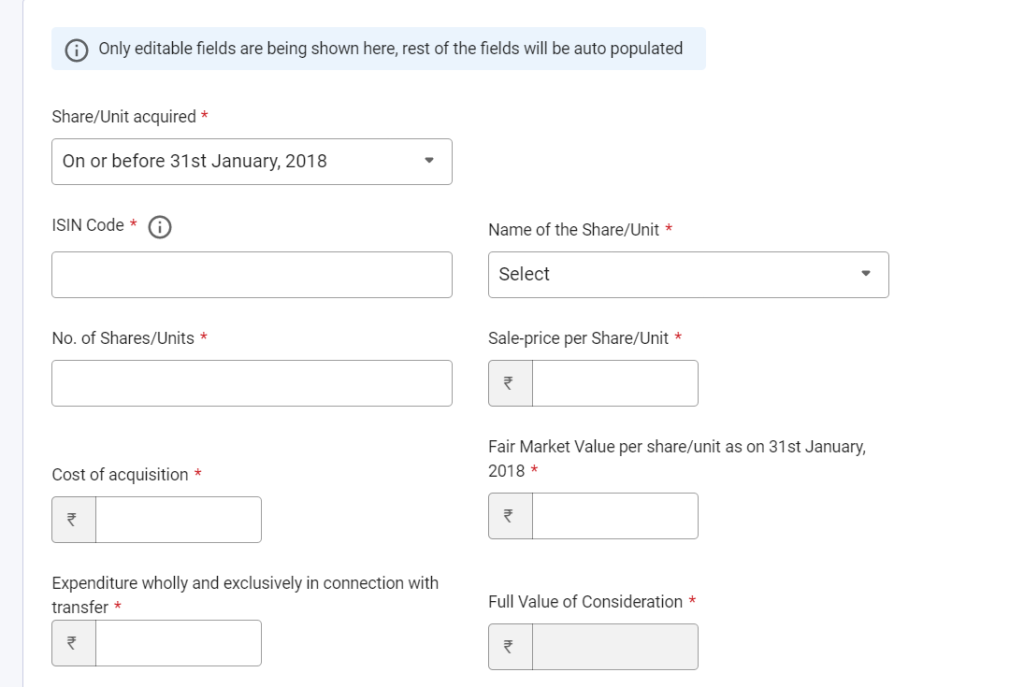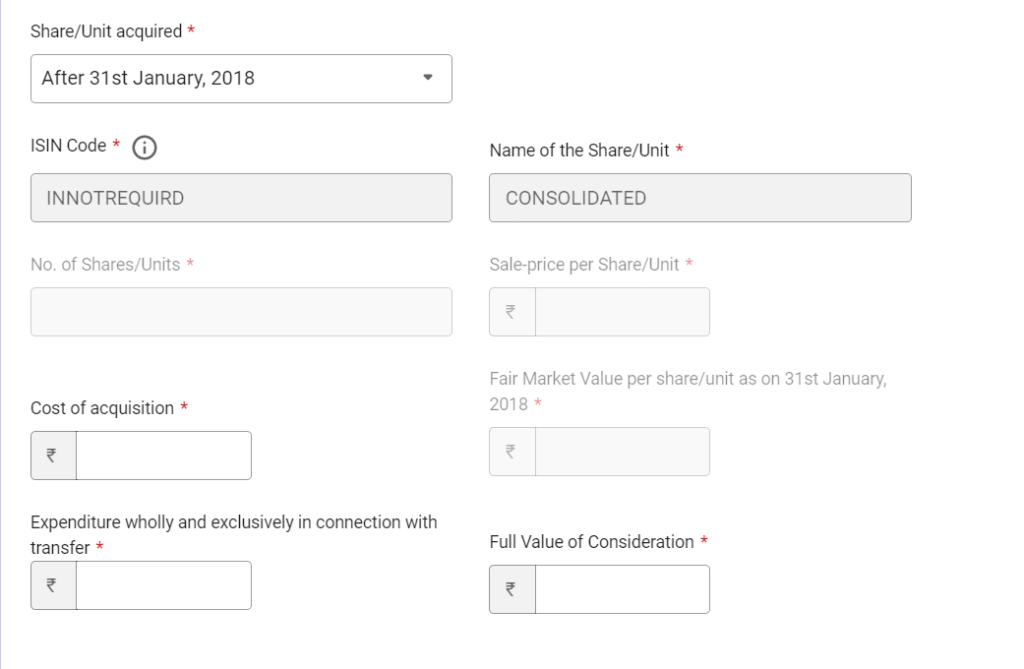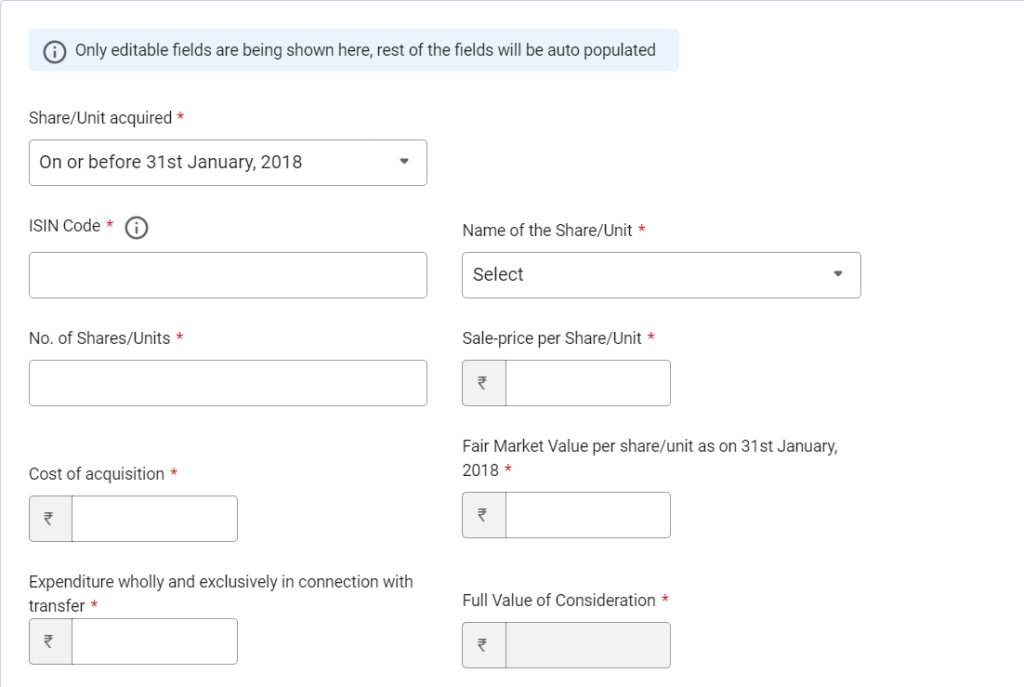
FY23-24: How to report long-term capital gains in the income tax return?
I have capital gains on the sale of equity shares and mutual funds I bought in 2020. Which ITR form should I choose, and where should I report these gains in the ITR?
For listed domestic shares and mutual funds, if the holding period exceeds 12 months, the gains are considered long-term. Since the shares were purchased in 2020, the capital gains will be long-term and taxed at 10%.
To report these gains, you need to file ITR-2 and enter the details under ‘Schedule 112A.’ In case you have trading income as well, you’ll have to file ITR 3.
What is the ISIN number? Where can I find that number?
ISIN, or International Securities Identification Number is a unique code that identifies securities like shares, bonds, and mutual funds. For example, the ISIN code of Tata Consultancy Services Limited is INE467B01029. You can find the ISIN code from your broker’s tax P&L statement or search for it directly on the official NSDL website.
In the case of mutual funds, you’ll find the ISIN in the capital gains statement provided by the fund house.
What exactly is the grandfathering clause applicable to capital gains? Will the details be automatically chosen, or do I have to manually fill them in?
Earlier, long-term gains from listed stocks and mutual funds were completely exempt from taxes. However, from 1st February 2018 onwards, these gains became taxable and to protect investors’ interests, the grandfathering clause was introduced.
The grandfathering clause applies to shares purchased before 31st January 2018. It allows you to use the Fair Market Value (FMV) as of 31st January 2018 as the cost of acquisition (COA) instead of the actual purchase price. The idea behind this is that the profits made until January 31, 2018, to be exempt from tax.
FMV is the highest market price recorded of a given security on that day. For mutual funds, the FMV is available in the capital gains statement provided by the AMC.
Now, to report your long-term capital gains, go to Schedule 112A of your ITR and manually enter details here.
- The very first field is selecting whether the shares were purchased before or after 31st Jan 2018.
- In case grandfathering clause is applicable, choose ‘on or before 31st Jan 2018.’
- Next, you’ll be asked to enter further details like the ISIN code, no. of shares, COA, FMV, etc.
- Enter these details and click on Add.
- Repeat these steps for all your transactions.

To calculate the cost of acquisition (COA), the below formula is used,
- Lower of – Fair market value as of 31st Jan 2018 and the actual selling price,
- Higher of – Step 1 value (above) and actual purchase price
For example, you bought 100 shares of Company A on January 1, 2017 at ₹30 per share. On January 31, 2018, the FMV of these shares was ₹50 per share. You sell all the 100 shares on July 1, 2023, at ₹70 per share.
To determine COA,
Step 1: Determine the lower of FMV as of January 31, 2018, and the actual selling price: Lower of ₹50 and ₹70, which is ₹50.
Step 2: Determine the higher of Step 1 and the actual purchase price: Higher of ₹50 (from Step 1) and ₹30 (actual purchase price) = ₹50.
Hence, your COA becomes ₹50.
Once the COA is determined, the LTCG will be automatically calculated as follows,
LTCG = Sales Value – COA
In our example, as there were 100 shares, the LTCG becomes,
₹7,000 – ₹5,000 = ₹2,000
Should I report capital gain transactions on a consolidated basis or scrip/trade-wise?
To decide how to report your capital gains, you need to consider the purchase date of your shares.
Purchased after 31st Jan 2018: You do not need to report scrip-wise transactions. You can add the consolidated buy and sell values and proceed.

Purchased before 31st Jan 2018: You need to report scrip/trade-wise transactions, including details like ISIN, name of the share, fair market value (FMV), etc.

The above questions are answered by Surbhi Pal from Quicko. This is for informational purposes only. Consult your tax expert for individualized advice.

i will try the same in form 112a but get error due to not filling box
*expenditure fully or exclusively in connection of transfer what amout like dp charges tobe put here? i am zerodha acc holder
but as i m read from various utube video that if you file ITR2 you not allowed to put dp charges in that box you afre only allowed when you file ITR3 but I am not done any fno trade last year, please explain